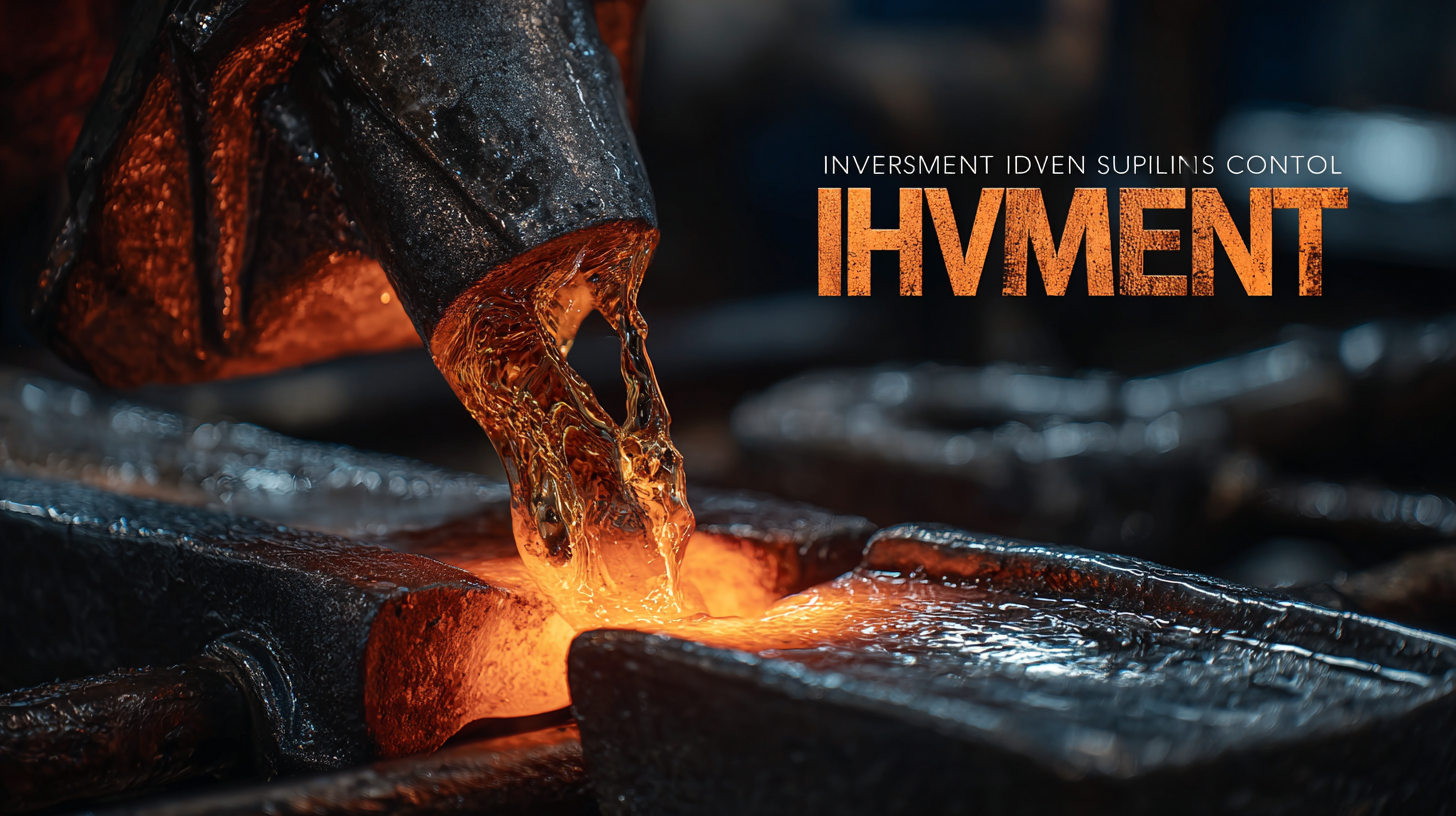The landscape of Investment Casting Supplies is poised for significant transformation by 2025, driven by advancements in technology and shifting market demands. According to a recent report from MarketsandMarkets, the global investment casting market is projected to reach USD 27.1 billion by 2025, growing at a CAGR of 5.6% from 2020. This growth is fueled by increased applications in various sectors, including aerospace, automotive, and medical, where precision and reliability are paramount. As manufacturers seek to optimize production processes and minimize material waste, understanding the detailed technical parameters of investment casting supplies becomes crucial.

This blog aims to explore emerging trends and practical strategies that will shape the future of investment casting, providing industry professionals with actionable insights to enhance their operational efficiency and competitiveness.
The investment casting industry is poised for significant transformation by 2025, driven largely by the emergence of alternative materials. As traditional resources face supply constraints, particularly with critical raw materials becoming more restricted globally, it’s essential to explore sustainable and innovative substitutes. Emerging materials like bio-based composites, advanced ceramics, and synthetic alloys are gaining traction due to their adaptability and lower environmental impact.
To effectively navigate these changes, here are some practical tips for investment casting suppliers. First, stay informed about new materials through continuous research and collaboration with universities and industry think tanks. Engaging in partnerships can yield insights into the latest advancements and potential applications of these alternative materials.
Second, invest in training and upskilling your workforce to ensure they're equipped to work with these innovations. This proactive approach not only enhances production efficiency but also drives sustainability in operations.
Additionally, consider implementing a waste valorization strategy to minimize ceramic shell waste. This involves finding innovative ways to repurpose or recycle materials, aligning with circular economy principles. By reducing waste and incorporating sustainable practices, businesses can improve their ecological footprint and establish themselves as leaders in the evolving investment casting landscape.
As we approach 2025, the investment casting sector is increasingly focusing on sustainable practices, driven by the pressing need for environmental accountability and corporate responsibility. Companies are now recognizing that sustainability is not just a buzzword but a strategic imperative that can lead to long-term benefits. The shift towards eco-friendly investment casting supplies is imperative for businesses looking to align with global sustainability targets while minimizing their environmental footprint.
Innovative approaches and eco-friendly materials are becoming essential in the investment casting process. Manufacturers are exploring options such as biodegradable binders and recycled metals to reduce waste and energy consumption. By adopting these sustainable practices, companies can not only meet regulatory requirements but also appeal to an increasingly eco-conscious consumer base. Transitioning to a more sustainable supply chain can present opportunities for cost savings and operational efficiency, showing that financial and environmental goals can go hand in hand.
In this evolving landscape, it’s vital for businesses to stay ahead of trends by investing in sustainable technologies and practices. Educational resources and workshops can aid manufacturers in understanding and implementing eco-friendly solutions. The commitment to sustainability will likely shape the future of investment casting supplies, positioning those who adopt these practices as leaders in their field by 2025.

The landscape of investment casting is evolving rapidly, driven by innovative technologies that are reshaping the industry. Today, companies are exploring alternatives such as 3D printing and advanced materials that enhance the capabilities of traditional casting methods. For instance, additive manufacturing is allowing for more complex designs and reducing waste, which not only lowers production costs but also opens the door to unique geometries that were previously unattainable with conventional techniques. This shift is empowering manufacturers to create more efficient and sustainable solutions.
Moreover, the integration of smart technologies and automation is revolutionizing factory operations, improving precision and efficiency. Companies are leveraging machine learning and artificial intelligence to optimize processes, predict maintenance needs, and refine product quality. As these technologies continue to mature, they will further enable businesses to streamline their supply chains and deliver products faster to the market. As we move towards 2025, it's clear that embracing these innovative technologies will be crucial for companies seeking to stay competitive in the evolving field of investment casting.
As we look toward 2025, the landscape of investment casting supplies is poised for transformation. One of the driving forces behind this shift is the need for cost-effective strategies in sourcing alternative materials. Manufacturers are increasingly seeking options that not only reduce expenses but also maintain the quality and integrity of their castings. By embracing innovative materials and suppliers, businesses can gain a competitive edge while optimizing their production processes.
One effective approach to sourcing alternative investment casting materials involves leveraging local suppliers. By partnering with local businesses, manufacturers can not only lower transportation costs but also foster relationships that lead to better pricing and more flexible supply chains. Additionally, exploring recycled and reclaimed materials can yield significant savings while contributing to sustainability efforts. These practices not only appeal to cost-conscious businesses but also resonate with environmentally aware consumers, enhancing brand reputation in a market that increasingly values ecological responsibility.
Investing in technology that promotes the use of alternative raw materials is another practical tip for companies looking to enhance their investment casting operations. From advanced simulation tools that can predict the performance of new materials to 3D printing for creating custom molds, the integration of cutting-edge technology is essential for those aiming to innovate their processes. By adopting these strategies, manufacturers can navigate the complexities of the investment casting supply chain effectively and sustainably, paving the way for future success.
As we look beyond 2025, the investment casting industry is poised for significant transformation driven by technological advancements and evolving market demands. One notable trend is the integration of artificial intelligence and machine learning in the design and production processes. These technologies will enhance precision in casting, allowing for more complex geometries and reduced material waste. Manufacturers will increasingly adopt smart manufacturing practices, leading to streamlined operations and improved inventory management, thus meeting the demands of a dynamic market.

Sustainability will become a focal point in investment casting practices. As environmental regulations tighten and consumers gravitate towards eco-friendly products, companies will need to embrace sustainable materials and processes. This shift could involve sourcing recycled metals and adopting cleaner energy sources in production facilities. Moreover, advancements in 3D printing technology will complement traditional investment casting methods, enabling faster prototyping while reducing the overall carbon footprint.
By anticipating these trends, businesses can effectively position themselves for future success in a competitive landscape.
